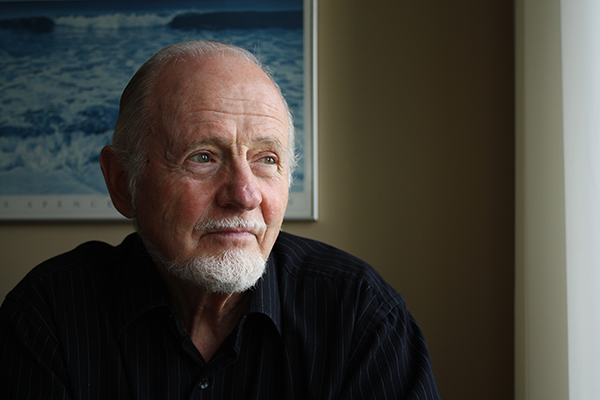Gregorian chant is one of the earliest forms of notated music using free flowing rhythms and simple melodies. When Michael Colgrass worked on this piece in his residency, he explored graphic notation with students. He asked individuals to create their own unique notations on a blackboard and then invited the whole class to play what they thought it should sound like. In Old Churches, Colgrass uses the elements of Gregorian chant and graphic notation to create an aura of voices echoing in a monastery. This piece is a great introduction to graphic notation, and performers have a fun and creative way to explore sound production along with the compositional process.
Instrumentation
1-Conductor
2-Flute 1
2-Flute 2
2-Flute 3
2-Oboe 1, 2
2-Bassoon (optional)
4-B-flat Clarinet 1
4-B-flat Clarinet 2
4-B-flat Clarinet 3
2-B-flat Bass Clarinet
2-E-flat Alto Saxophone 1
2-E-flat Alto Saxophone 2
2-B-flat Tenor Saxophone
1-E-flat Baritone Saxophone
4-B-flat Trumpet 1
4-B-flat Trumpet 2
2-B-flat Trumpet 3
4-F Horn
2-Trombone 1
2-Trombone 2
2-Trombone 3
2-Baritone B.C.
2-Baritone T.C.
4-Tuba
2-Bells 1
2-Bells 2
2-Bowls 1
2-Bowls 2
Meet The Composer

Michael Colgrass is a composer, writer, lecturer and NLP trainer. He gives personal development workshops around the world for performers, students and others. He is a graduate of the University of Illinois, a Tanglewood scholar, twice Guggenheim Fellow, and winner of the Pulitzer Prize for Music. He won an Emmy for the PBS documentary “Soundings: The Music of Michael Colgrass,” which features his unique teaching methods.
The Rockefeller Foundation created a special program for Colgrass called “Artist in the Theater at Large,” which led to studies in mime, acting, dance and directing in New York, commedia dell’ arte in Milan and avant garde theater with Jerzy Grotowski’s Polish Theater Laboratory in Wroclaw, Poland.
In l985 Colgrass became a certified trainer of neuro-linguistic programming (NLP). He has been a trainer in John Grinder’s hypnosis workshops and is currently guest trainer for the Dynamic Learning Center at NLPU in Santa Cruz, California. He combines his NLP and theater training techniques with 45 years of professional performing experience in his “Excellence In Performance” workshops. He has trained more than 25,000 people in Europe, Britain, South America, South Africa, Indonesia and throughout the United States and Canada.
NLP co-founder John Grinder modeled Colgrass’ strategies for creativity, described in NLP developer Robert Dilts’ book Tools For Dreamers (Meta Publications, 1991). Colgrass originated Deep Listening, a technique for hypnotizing audiences to heighten concentration, which is featured in the book Leaves Before The Wind (Grinder DeLozier & Associates, l991). His articles on creativity and life skills have appeared in The New York Times, The Christian Science Monitor and Music Magazine. His first book, My Lessons With Kumi – How I Learned To Perform With Confidence In Life And Work, is the summation of his methods and philosophy.
About The Premiere
This piece premiered January 2000 with the Winona Drive Public School Band in Toronto, Ontario, Canada under the direction of Louis Papachristos.